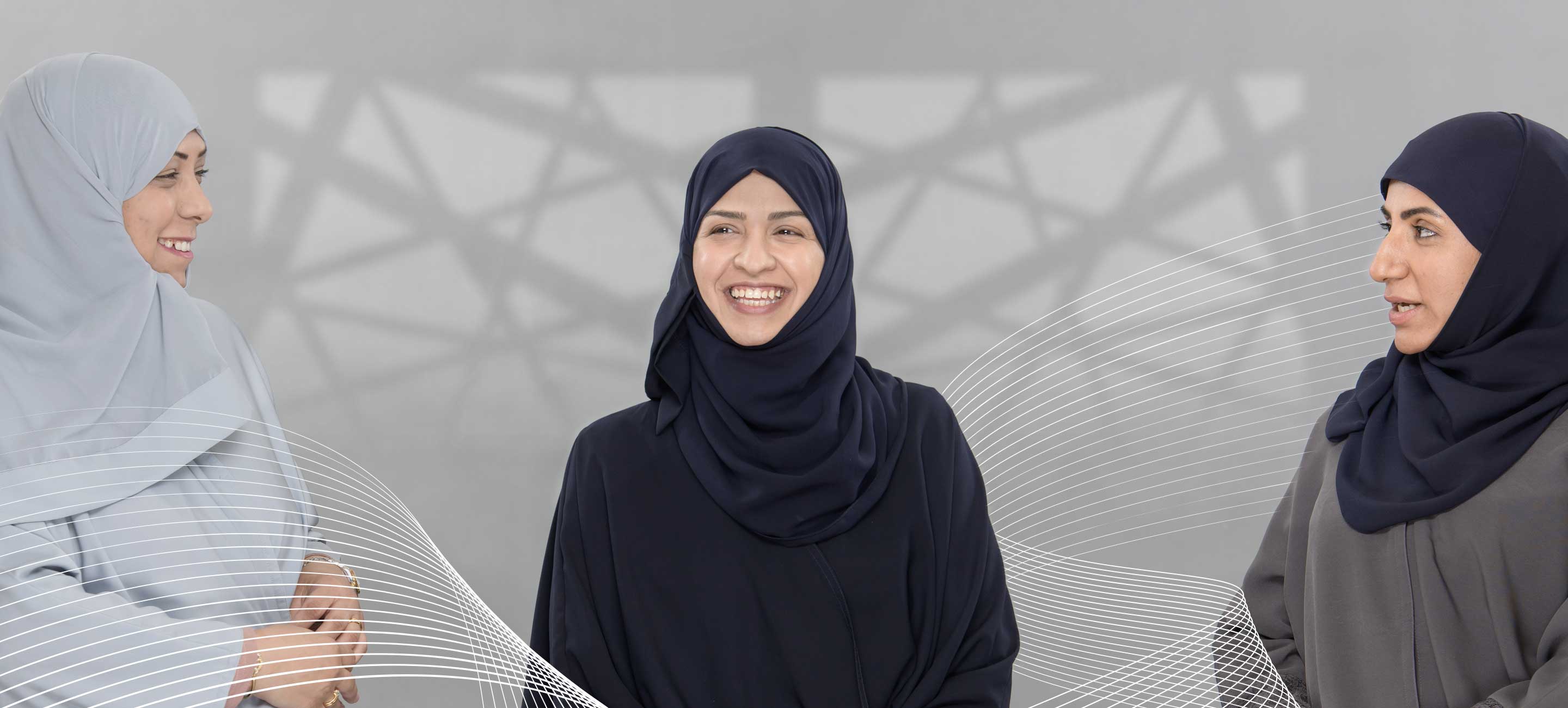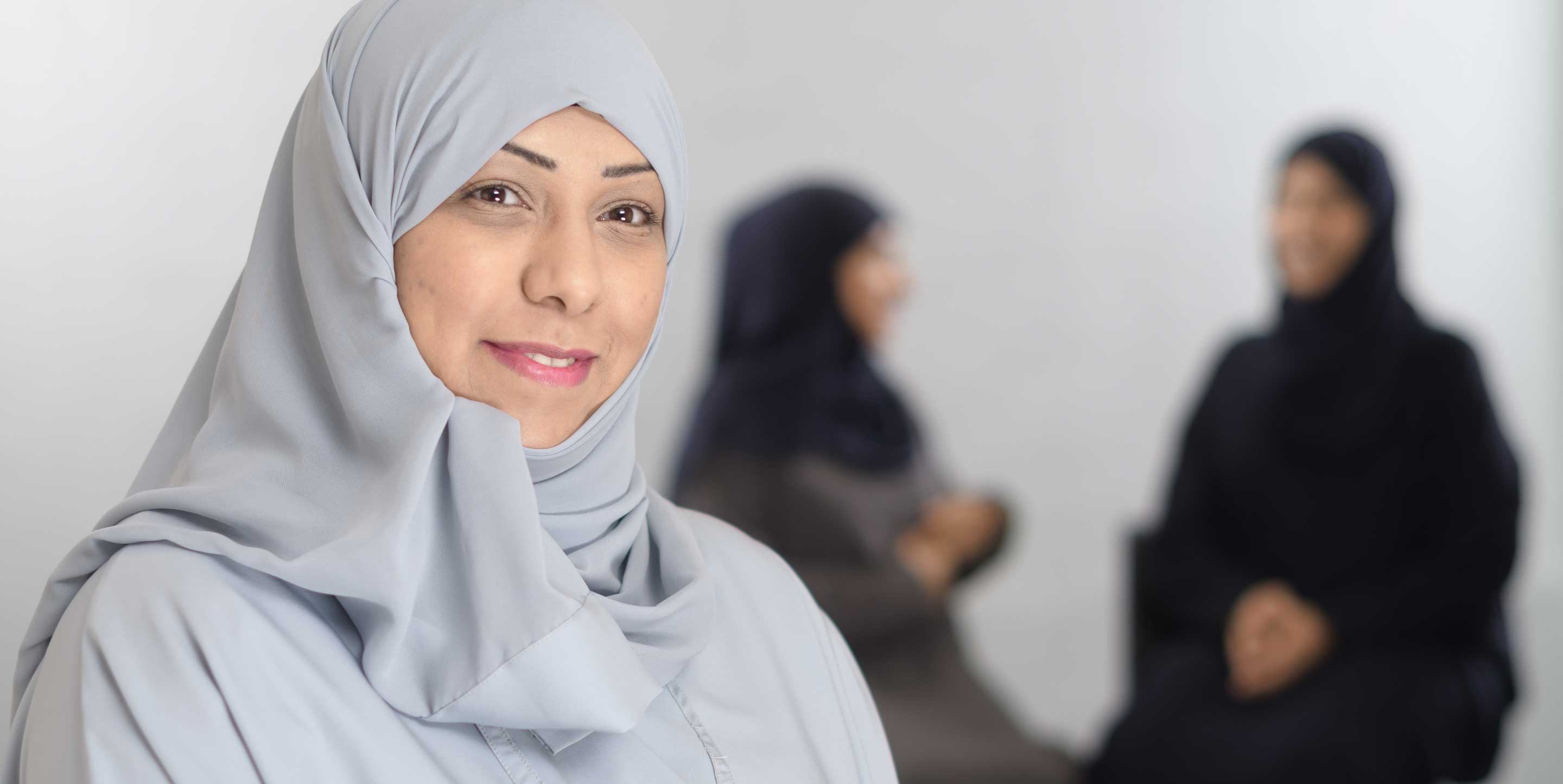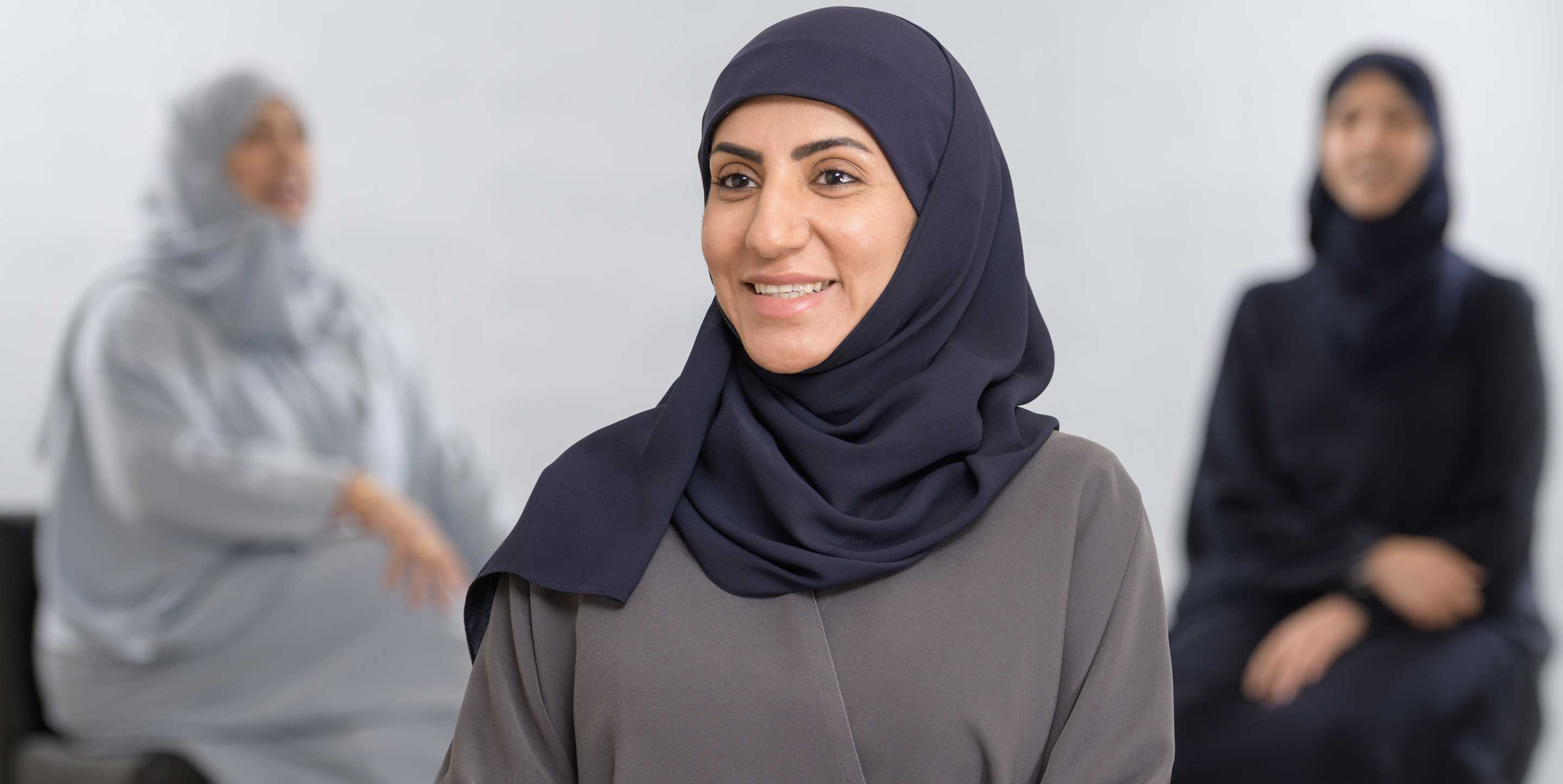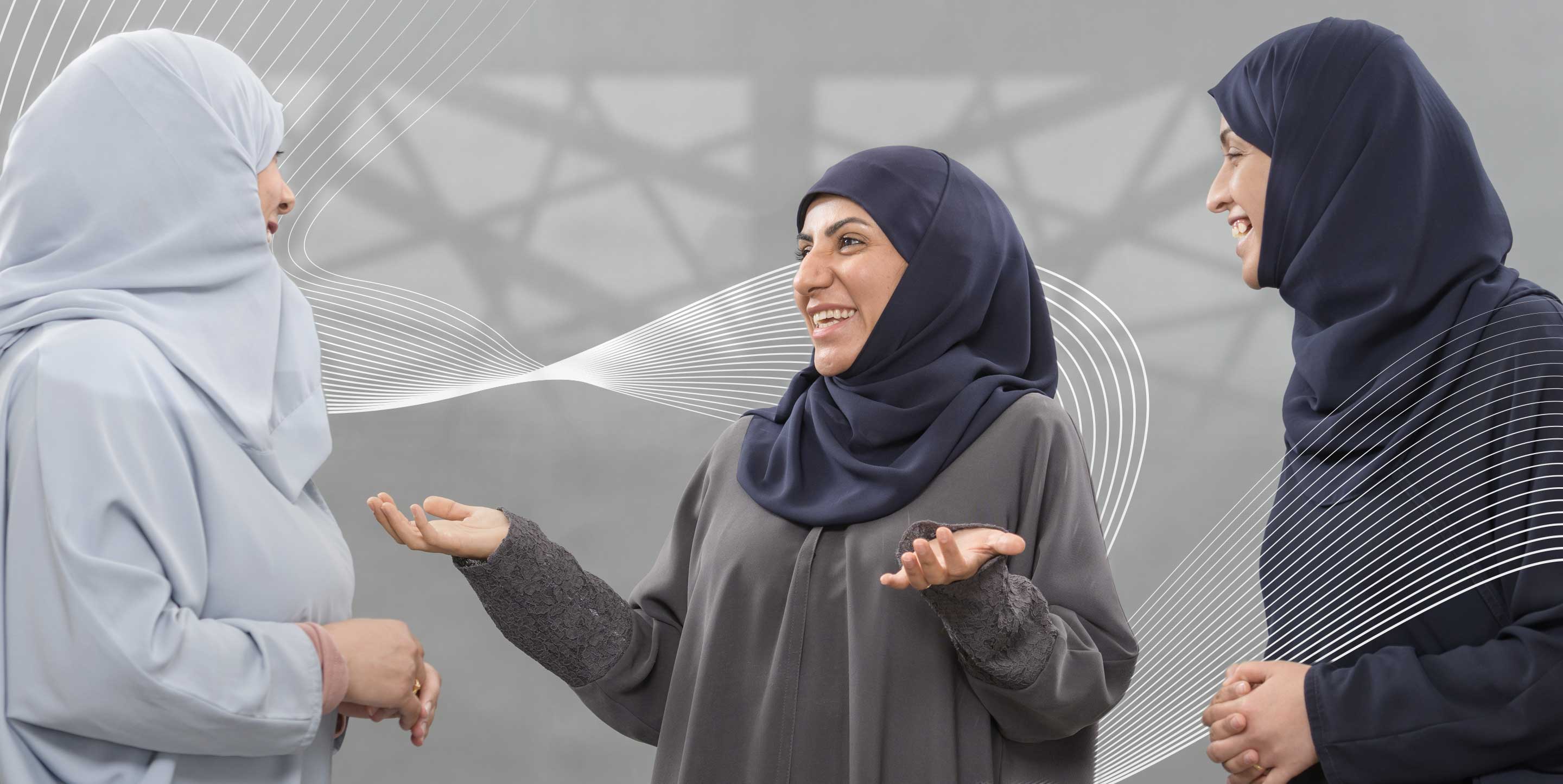Women innovators
Scientists raising the bar in the energy sector.

- Aramco’s R&D work focuses on innovations that aim to help future generations to continue to have access to reliable energy
- Dr. Nadrah Alawani, Dr. Amani Musharah and Maryam Altaher have led and worked on innovations that have raised the bars in their respective fields and the energy sector as a whole
- From gaining new understanding of hydrocarbons, to formulating better performing fuels that could help lower emissions, women innovators at Aramco continue to break new scientific ground
Aramco’s research and development work focuses on innovations that aim to help future generations to continue to have access to the benefits of a more secure, more sustainable energy supply. Scientific and technological advances that can help us to achieve this goal are happening in our R&D centers around the world, including three in Saudi Arabia. Women have long played a leading role in Aramco’s drive for innovation, and their talents and expertise are continuing to help us to make advances in science, technology and engineering.
Three leading female scientists based at our Research and Development Center in Dhahran explain how their innovative work in fuel analysis, catalysis and petroleomics is raising standards in fuel performance, efficiency and emissions reduction across the Company’s operations, and across the oil and gas industry.
Dr. Nadrah Alawani
Petroleomics Scientist

Petroleomics is the science of “understanding the oil at its most profound, molecular level,” says Dr. Nadrah Alawani, who has worked at Aramco for seven years. It is a science on which research and technology development heavily depends, especially technologies that create value from crude oil.
She uses mass spectrometry, an analytical technique used to obtain the molecular weight of the compounds contained within a substance. Crude oil is a complex mix, knowing the molecular weights helps in identifying the structure and molecular formula of the fractions — the types of hydrocarbons contained within the oil. This is immensely useful for the successful characterization of petroleum samples — which is fundamental in supporting several applications including oil exploration, catalyst development, and process optimization.
“Studying oil at this level is extraordinarily powerful across the value chain, for solving flow assurance issues, for feed selection and blending, and for catalyst development. It helps our researchers to optimize Aramco’s products,” says Dr. Alawani, who leads the analytical work in the projects she works on.
This detailed information holds great value for the Company because “the long-chain hydrocarbons and aromatic hydrocarbons are what gives oil its characteristics — whether it is light or heavy, sweet or sour,” she adds.
Dr. Alawani, who first specialized in using high-resolution mass spectrometry during her PhD in Analytical Chemistry at the University of Akron in the United States, has so far had four patents granted for her work at Aramco: two of these are related to analyzing the by-products of oil refining, and finding a way to convert one into a solvent that can be used to separate the aromatic compounds in crude oil. The other two patents are for work Dr. Alawani has done on separating so-called “bad actors” which can deactivate the catalysts used in the hydrocracking process that turns the heavy fraction of oil into useful fuels such as gasoline.
The heavy fraction is what is left after crude oil has been distilled, and the lighter fractions, including gasoline and diesel, have been separated out for use. What remains, the low-quality, heavy residues, need further treatment through the hydrocracking process to break it down and upgrade it through conversion into diesel and gasoline. Mass spectrometry allows Aramco’s scientists to see how the heavy fraction of different types of oil, which are made up of different chemical compounds, behave when they are treated during a process such as hydrocracking.
The technique is “critical” to getting the maximum amount of value from the heavy fraction, says Dr. Alawani.
Since joining Aramco, Dr. Alawani has had a fellow petroleomics specialist as a mentor, who has guided her in her research interests. And, for the past year, she herself has been acting as a mentor to a young scientist who has joined the lab, passing on the expertise she has built up in her time at the Company. This type of professional support and knowledge sharing is a key element of Aramco’s research and development work.
“Mentoring has added a new dimension to my work. Helping younger scientists grow their skills, make better decisions and develop their careers is very special to me,” says Dr. Alawani.
Dr. Amani Musharah
Fuel Scientist

In 2019, a team of Aramco scientists led by Dr. Amani Musharah worked on a project to enable the Company to push more oil through an existing pipeline, by analyzing and assessing new grades of a chemical additive that would be combined with the crude oil to increase its flow-rate. Their work would help to determine whether a costly new pipeline would need to be built to meet increasing customer demand.
The analysis showed that a new, commercially available additive—a drag-reducing agent which lets more fuel flow through a pipeline without requiring the use of more energy—would allow the flow of oil to increase to such a degree that the construction of the new pipeline, at a cost of $500 million, would no longer be required.
“The additive we worked with was unfamiliar to us—we had to make a decision based on our expertise in fuels and crude oils analysis.
“Everything that goes into Aramco fuels gets evaluated by my team first. We decide what makes a good or bad additive,” explains Dr. Musharah, who has worked at Aramco for 14 years, and gained her PhD in Chemistry from the University of Manchester in the UK.
Dr. Musharah’s work focuses on the continuous improvement of Aramco’s fuels in terms of performance, fuel economy, and emission reduction. She has led a diverse range of research programs into the evaluation and certification of fuel additives as part of Aramco’s work on making lower-carbon transportation fuels. That includes the removal of lead from gasoline, and reducing the level of sulfur — an element with harmful environmental and health effects — in diesel and gasoline to almost zero.
She and her team have also worked on a different program for the long-term strategic storage of lower-carbon fuels which contribute to reducing emissions. The program aims to support the Kingdom’s transition to lower-carbon fuels, and to support its fuel economy. Dr. Musharah’s contribution included a study that led to significant savings and improvements in the program.
Another highly innovative project she is working on is bio-crude, an oil extracted from types of algae, which is then refined so it can be used in the same way as conventional fuel. The project aims to support the Kingdom in its transition to lower-carbon energy, by providing it with new, additional energy resources.
Maryam Altaher
Catalysis Scientist

Worldwide, the majority of cars on the road are expected to be powered by traditional internal combustion engines well into the next decade. So, making more efficient engines, and lower-carbon fuels, is a priority when it comes to reducing carbon emissions, and Maryam Altaher and her team at Aramco have been working with automakers around the world on both these goals.
Mrs. Altaher has been fascinated by chemistry since she was at high school, and brings this enthusiasm to her work at Aramco: “I can remember like it was yesterday, the teacher explaining organic chemical reactions and how we can play with the results by switching the reagents, based on the knowledge we have. I thought it was beautiful, I fell in love with it.”
Mrs. Altaher, who has worked at Aramco as a lab scientist specializing in fuel chemistry for six years, has been part of an R&D agreement with automaker Honda since 2017. The agreement specifically focuses on formulating fuel for Gasoline Compression Ignition (GCI) engines, which have the potential to reduce fuel consumption and CO2 emissions by 25 percent.
The objective of the research is to reduce fuel consumption and CO2 emissions from internal combustion engines, while lowering levels of pollutants such as NOx and smoke emissions.
“To make a more optimal type of gasoline for GCI, there are three possible options,” she says. “One, to change the recipe of the gasoline at the refinery. Two, ask the retailers to add additives to make this specific formulation of gasoline. Or three, put a device in the vehicle that will do the catalytic reaction onboard and turn the gasoline into an enhanced type.”
Aramco and Honda are working on option three, with Aramco researching the in-car catalytic reaction—which is one of the many ways to re-formulate fuel—that needs to happen. Testing is being done at Aramco’s research center in Detroit and the exploratory study is expected to be completed in September 2024.
Mrs. Altaher, who holds a Master’s Degree in Chemical Science from the King Abdullah University of Science and Technology in Saudi Arabia, has also had a patent granted for her work on a different kind of emissions reduction — a process to capture sulfur oxide from the tailpipes of large vehicles, and ships in particular, to then store it or convert it for use in agriculture or industrial processes. The sulfur oxide is absorbed into a special unit onboard the ship, from where it can be unloaded when the ship refuels.
“The patent applies to the whole process,” she said. “The new, unique element is in capturing it and then unloading it at a gas station, or using a chemical reaction to convert it into something useful.”
The work of these three leading scientists demonstrates Aramco’s pursuit of innovation to gain new understanding of hydrocarbons, improve processes, formulate better performing fuels and lower engine emissions. From understanding crude oil at the most detailed molecular level of its composition, to working with carmakers on practical solutions to overcome the remaining challenges facing bringing GCI engines to market, women innovators at Aramco continue to break new scientific ground.
Women innovators at Aramco
continue to break new scientific ground




